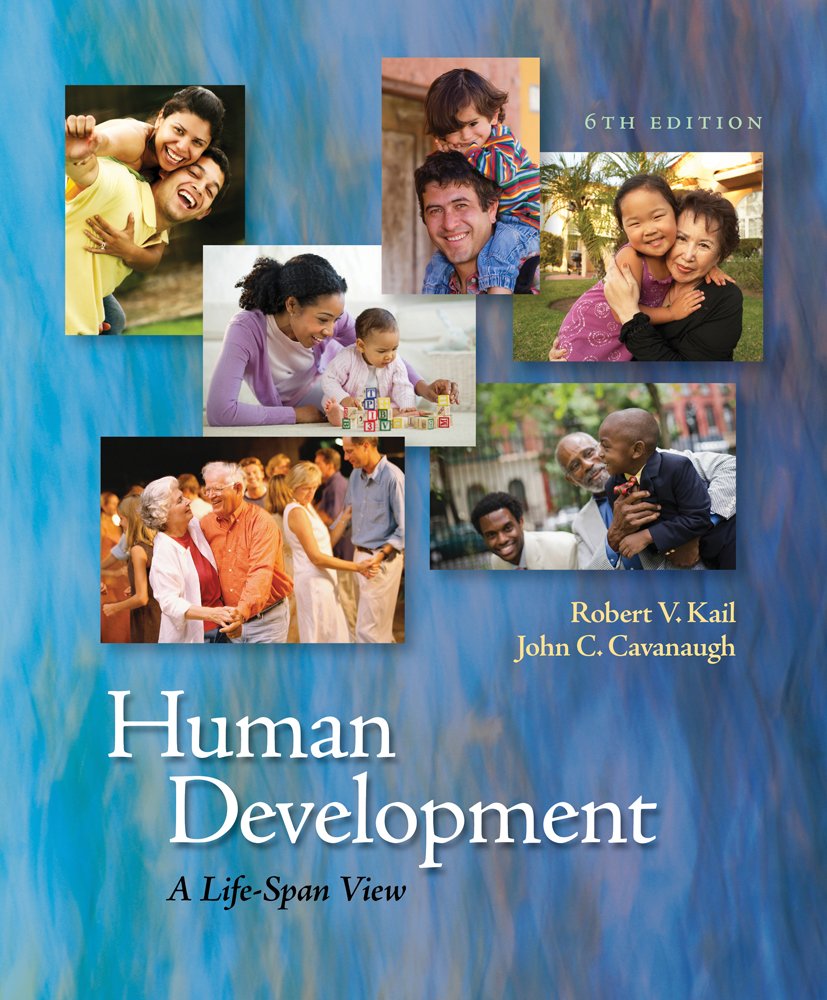Description
Human Development A Life Span View 6th Edition By Kail -Test Bank
MULTIPLE CHOICE
1.Who is most likely interested in the study of human development?
|
a. |
Dr. Harvey, who studies the brain cells of infants |
|
b. |
Dr. Hatfield, who studies eating disorders |
|
c. |
Dr. Deal, who studies how political attitudes change with age |
|
d. |
Dr. Hersh, who studies elderly patients with Alzheimer’s disease |
ANS: C DIF: Easy REF: 1.1 OBJ: 1.1
KEY: Key Term MSC: Application
2.Which most accurately reflects the nature of the scientific study of human development?
|
a. |
Multidisciplinary |
|
b. |
Focus on groups, not individuals |
|
c. |
Nontheoretical |
|
d. |
Emphasis on stability over change |
ANS: A DIF: Easy REF: 1.1 OBJ: 1.1
KEY: Key Term MSC: Conceptual
3.Which question best captures the spirit of most individuals who study human development with regard to the nature/nurture question?
|
a. |
How do genes and environmental factors interact in the development of memory processes? |
|
b. |
Which human behaviors are determined genetically, and which are determined by environmental factors? |
|
c. |
At what age do environmental factors surpass genetic factors as most important in human development? |
|
d. |
Which genes are responsible for childhood behavior, and which genes are responsible for adult behavior? |
ANS: A DIF: Difficult REF: 1.1 OBJ: 1.1
MSC: Conceptual
4.Which term does not belong in this group?
|
a. |
Experiential |
|
b. |
Nurture |
|
c. |
Environmental |
|
d. |
Hereditary |
ANS: D DIF: Difficult REF: 1.1 OBJ: 1.1
KEY: Key Term MSC: Conceptual
5.Since Dr. Kim takes a strong nature position concerning the origins of mental
retardation, she would most likely hypothesize that her son’s mental retardation is due to
|
a. |
her parenting style. |
|
b. |
his genes. |
|
c. |
his exposure to a toxic chemical prior to birth. |
|
d. |
random chance. |
ANS: B DIF: Moderate REF: 1.1 OBJ: 1.1
KEY: Key Term MSC: Application
6.The notion that development is best described in terms of a series of abrupt shifts in behavior best fits with the _____ approach.
|
a. |
Nature |
|
b. |
Nurture |
|
c. |
continuity |
|
d. |
discontinuity |
ANS: D DIF: Easy REF: 1.1 OBJ: 1.1
KEY: Key Term MSC: Factual
7.When discussing child development, Olaf uses terms like the “terrible 2s” and the “tranquil 3s.” These ideas are most compatible with a ____ view.
|
a. |
context-specificity |
|
b. |
hereditary |
|
c. |
continuity |
|
d. |
discontinuity |
ANS: D DIF: Moderate REF: 1.1 OBJ: 1.1
KEY: Key Term MSC: Application
8.Dr. Fletcher is attempting to determine whether adult criminals were rule breakers throughout their childhood, or whether they suddenly turned to a life of crime. Her research is most concerned with which issue of human development?
|
a. |
Nature versus nurture |
|
b. |
Universal versus context-specific development |
|
c. |
Biological versus sociocultural forces |
|
d. |
Continuity versus discontinuity |
ANS: D DIF: Moderate REF: 1.1 OBJ: 1.1
KEY: Key Term MSC: Application
9.Yacef is interested in determining whether children develop virtually the same way in Algeria as they do in other parts of the world. Yacef’s research deals primarily with the ____________ issue of human development.
|
a. |
psychological versus biological forces |
|
b. |
universal versus context-specific development |
|
c. |
nature versus nurture |
|
d. |
continuity versus discontinuity |
ANS: B DIF: Easy REF: 1.1 OBJ: 1.1
KEY: Key Term MSC: Application
10.Sara believes that memory processes develop the same way in all children. Sara is most likely to support a _____ position regarding human development.
|
a. |
universal |
|
b. |
nurture |
|
c. |
discontinuous |
|
d. |
non-normative |
ANS: A DIF: Easy REF: 1.1 OBJ: 1.1
KEY: Key Term MSC: Application

Be the first to review “Human Development A Life Span View 6th Edition By Kail -Test Bank”